The history of natural gut strings and why they're still used in tennis today

This story is one segment of a four-part series on SI Tennis that will look back in history and chronicle the changes and progression of fundamental aspects of the game, from sneakers to rackets and more.
The story of tennis strings starts with a song.
Just one year after the official adoption of tennis rules, a Frenchman created natural gut tennis strings, giving players a product in 1875 that is still in use 140 years later.
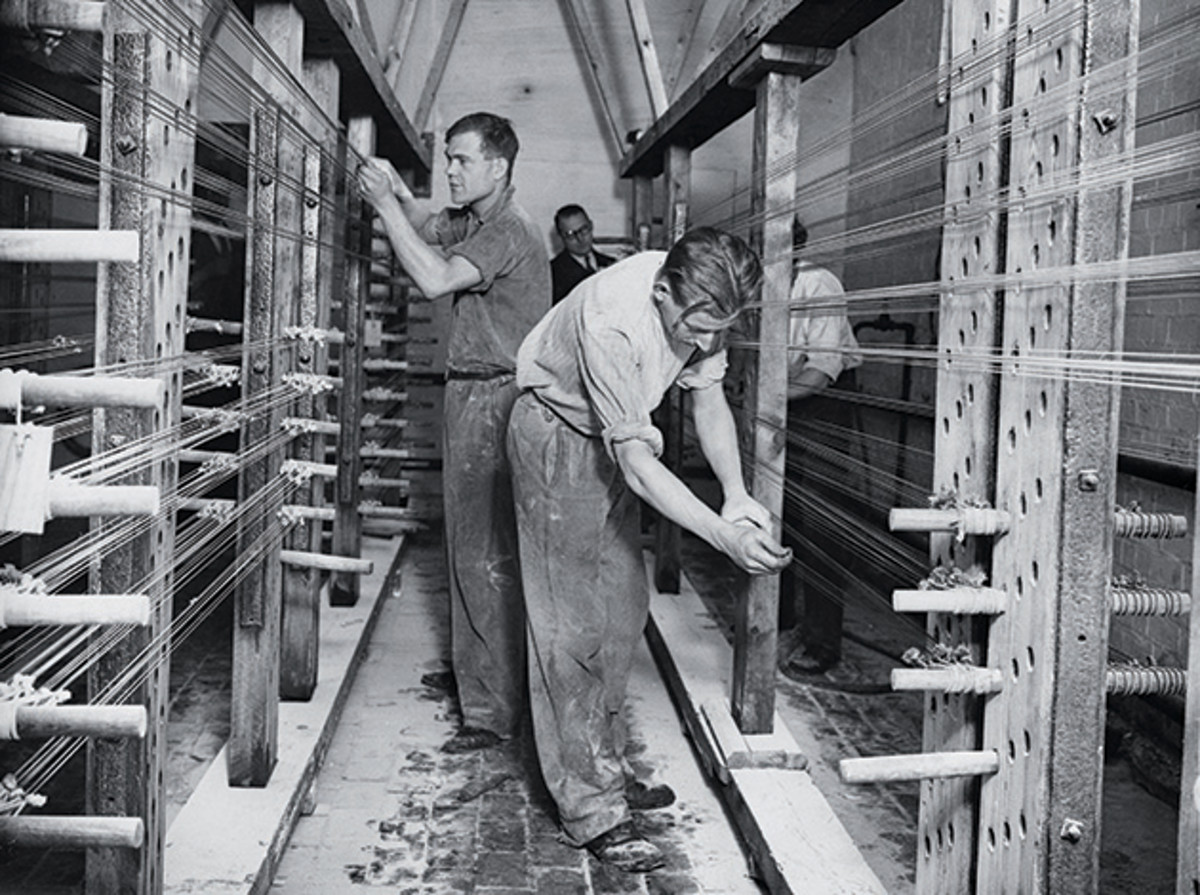
The birth of strings
The history of tennis umpiring: How Hawk-Eye changed the game
In Lyon, France, Pierre Babolat made a name for himself crafting strings for musical instruments. Following the birth of tennis, it was only natural that Babolat repurposed his craft for an additional use. And it was only natural to use natural gut.
The first tennis strings, created in 1875, were formed from sheep intestine. While Babolat—now a tennis company—still creates natural gut string from its Lyon, France, facility, the tide has turned from sheep intestine to cows.
“A lot of people think natural gut is for the old people,” says Franck Fernier, Babolat strings product manager. “Natural gut is still used on the tour, mostly in hybrid combination.”
The synthetic introduction
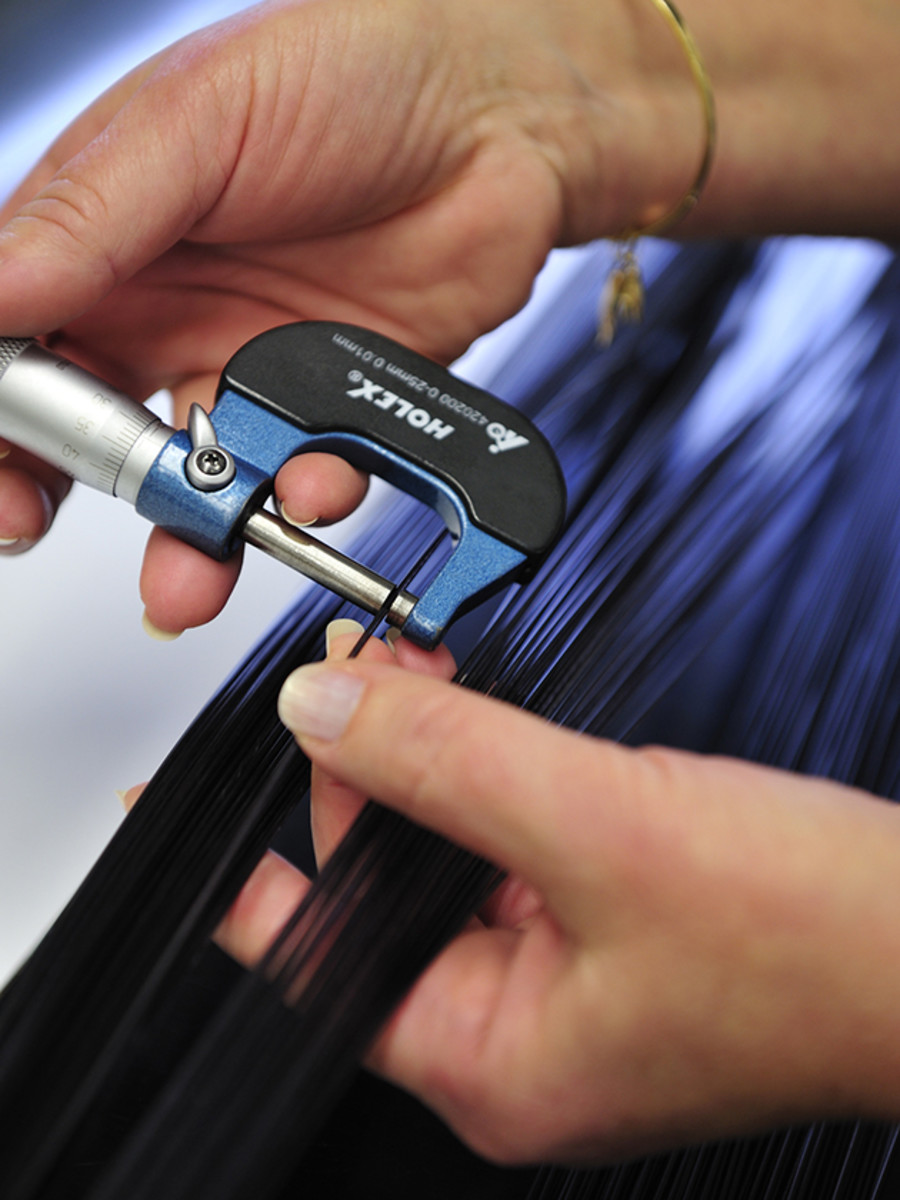
Fernier credits the 1950s for introducing synthetic materials, which were created to provide a more cost effective string choice. The new strings required a different manufacturing process, one that would help handle the influx of additional materials later on. And once the first midsize and oversize rackets started to hit the market, the desire for less expensive strings only increased with the need of more string length per racket.
The 1950s was also when Babolat switched to cow gut for its natural product, improving the durability over the fragile sheep intestine while also introducing the string in black for the first time.
While synthetic materials remained largely a choice for the price conscious, the use of synthetics played a part in the late 1970s with the introduction of the spaghetti string pattern—a process with less interwoven sections to create all kinds of movement—although that patterns was quickly banned by the International Tennis Federation.
The Gustavo Kuerten effect
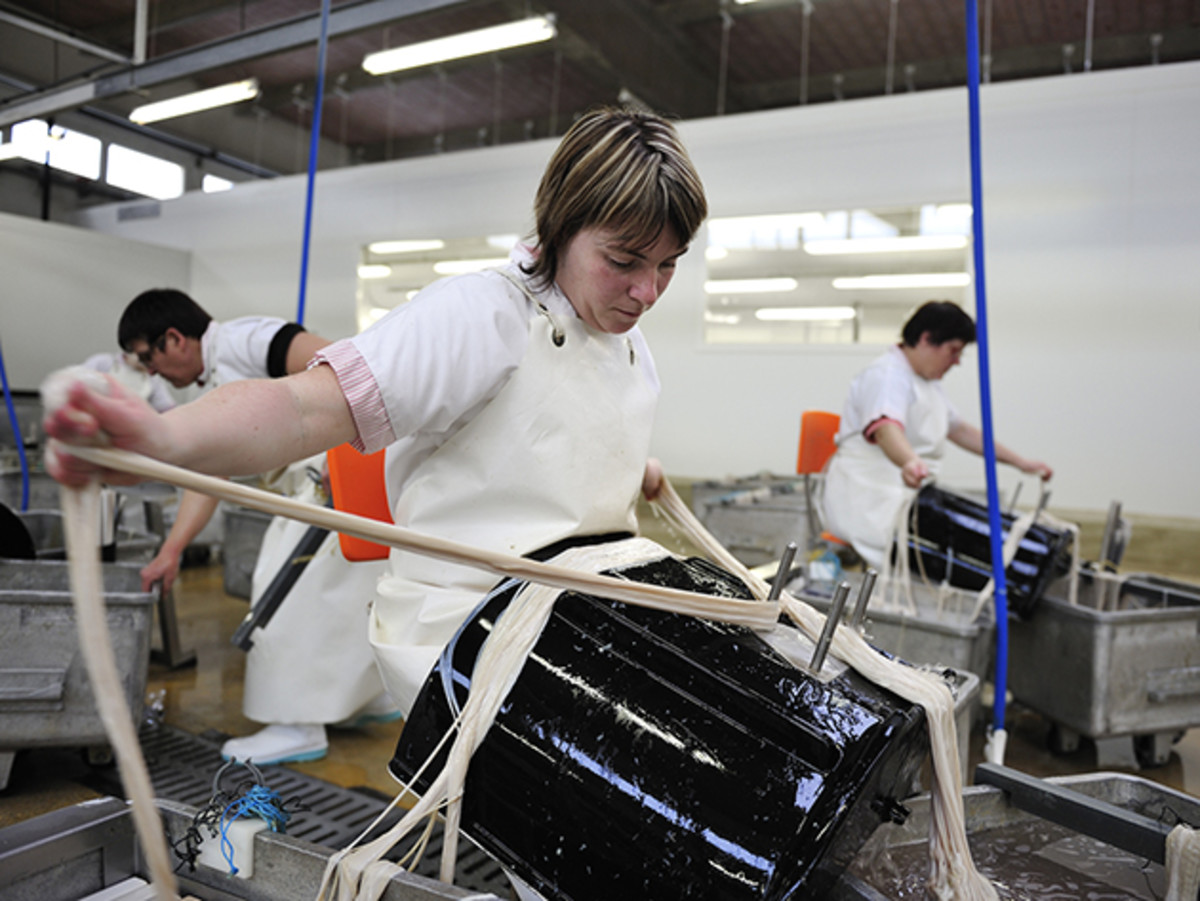
The French may have created natural gut strings in 1875, but it was in Paris in 1997 where the string world again shifted in a major way. A relatively unheralded Brazilian, Gustavo Kuerten, took the French Open title—his first of three—with a brand-new product in his Head racket: Belgium-made Luxilon polyester string.
The stiffer string gave Kuerten—and the other early adopters, such as James Blake—more control and, thus, more spin. Much more spin.
Todd Martin, former ATP Tour player and now CEO of the International Tennis Hall of Fame & Museum, says that if the 1980s and early 1990s were all about power and serves, Kuerten started a shift to make tennis a “string-based” game.
“I think most of us looked at it and said, ‘Geesh, this racket is part of me, why should I mess with that?’ and then we would see balls that looked like they would go eight feet out land on the baseline and you start to understand that the game is really changing and how logical is it to think that the same effect on the ball can happen off of a racket I’m holding,” Martin says.
Martin stuck with gut, but others started to toy with the polyester strings. Soon the casual testing of different materials became outright investigations, whether it was gut, nylon, Kevlar, polyester and eventually, a variety of multi-filament hybrids within synthetic materials.
The hybrid era
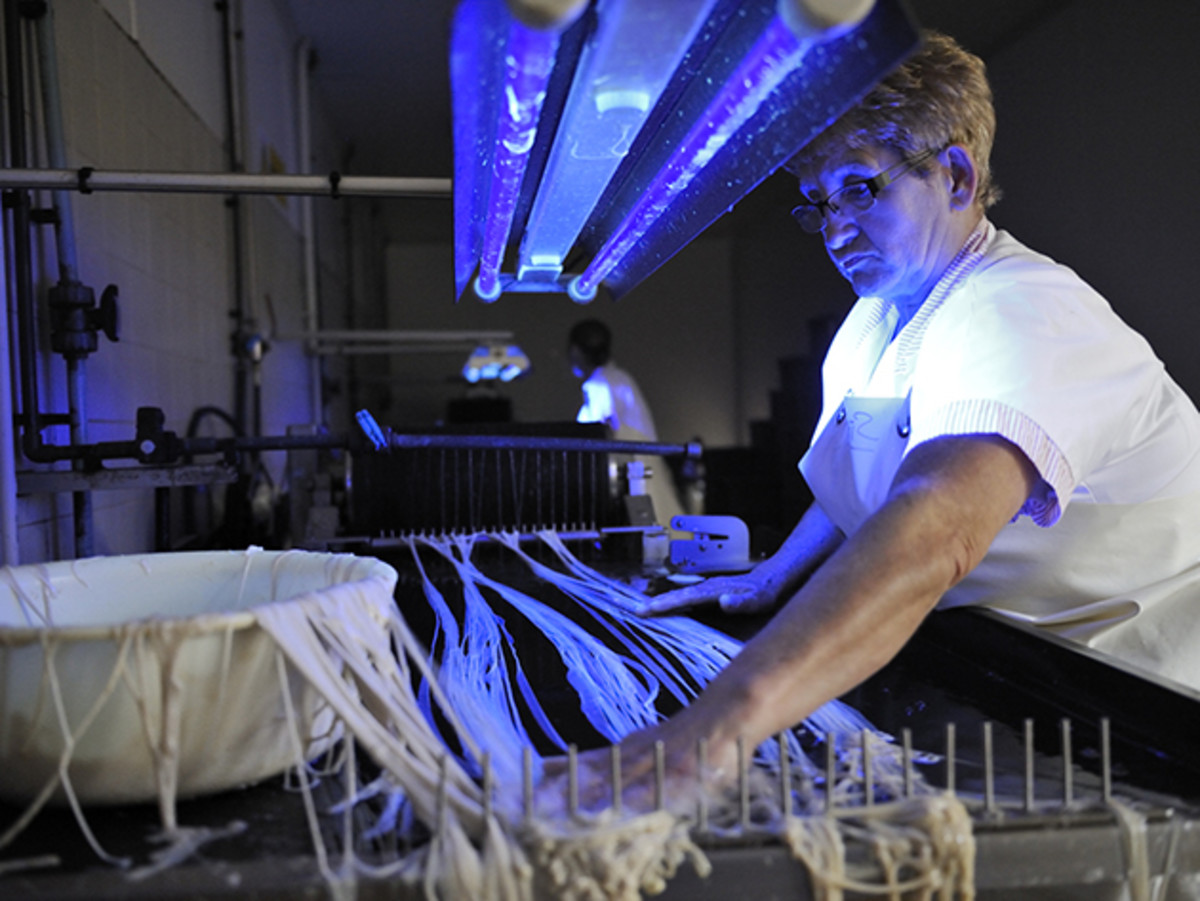
Polyester may have kicked off a sudden and dramatic exodus away from natural gut, but more recently gut and polyester have found a way to coexist. The hybrid string, where the main strings feature one product and the cross strings another, gives players a better handle on their control and power.
Fernier says the natural gut-polyester combination plays the most popular. “With this mix you can combine different benefits,” he says. “You have comfort in one side and control on the other side. You mix this and you have a great combo. We say that the perfect string doesn’t exist. You can mix different kinds of benefits and construction to find the perfect solution for your game.”
Now every string manufacturer has a polyester string and each places some sort of twist on it, trying to accentuate the control from the stiffness while adding in comfort with additional materials.
Now players dial in exactness, even down to the string materials. “I would look at a combination of string pattern, string makeup—either hybrid or polyester—and the weight of the racket as the three things as important as just about anything,” Martin says.
Looking ahead
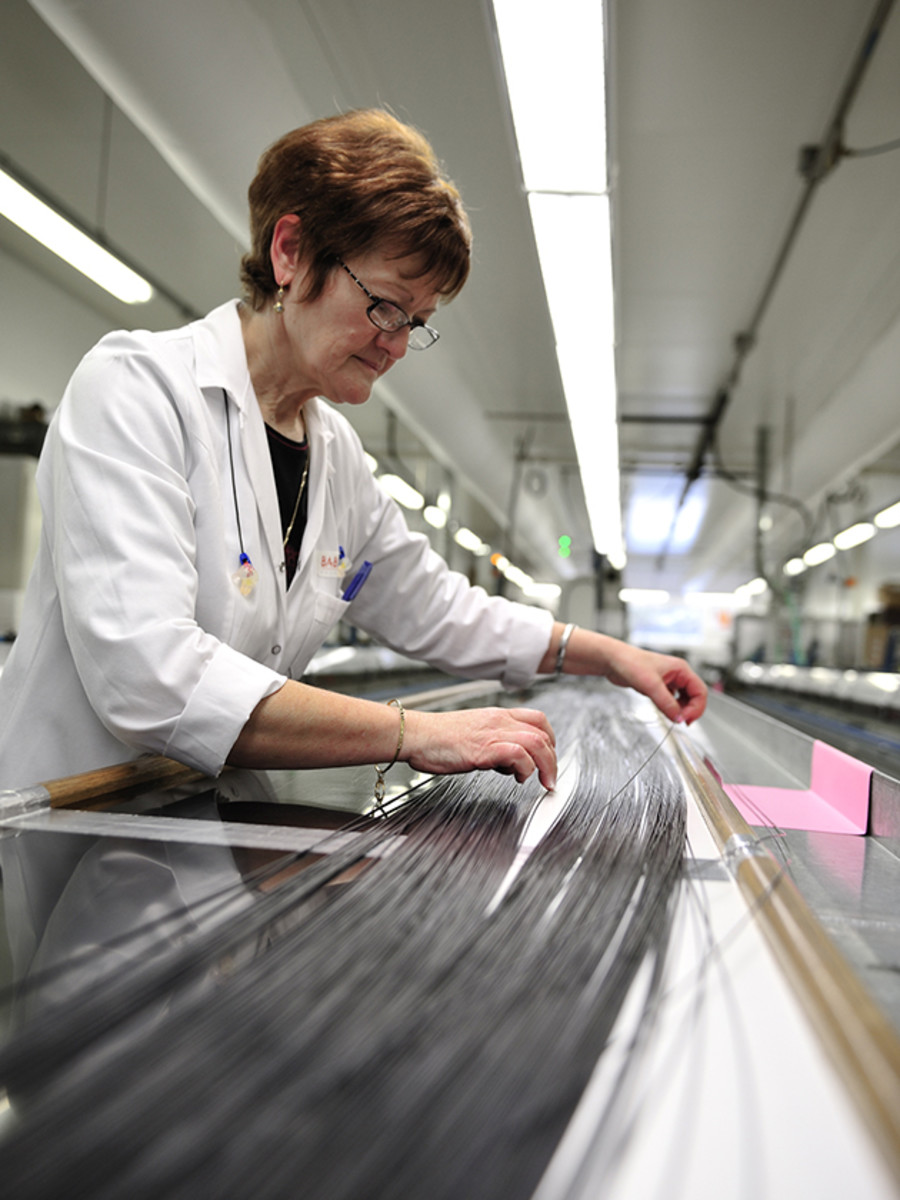
The creation of natural gut hasn’t changed that much. Sure, time has brought new technology and even new strategies—such as using seven bigger bends during construction instead of the 13 used originally—but the week-long process for Babolat still involves more than 25 people working in Lyon, France, by hand, building the string.
As natural gut still finds its way into the weaves of top-level players, everyone wants the next Kuerten effect. We don’t yet have that material of the future, so, for now, we can appreciate both what music gave us in the 1800s and what synthetics then added to the mix.
Tim Newcomb covers stadiums, sneakers and technology for Sports Illustrated. Follow him on Twitter at @tdnewcomb.
